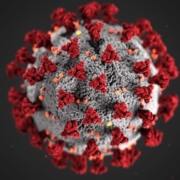Updates on EPA Efforts to Address PFAS in Pesticide Packaging
This original announcement was published by the EPA on September 30, 2021. Click here for more information.
The U.S. Environmental Protection Agency (EPA) continues to work diligently to address per-and polyfluoroalkyl substances (PFAS) in the environment and is providing important updates on its progress in testing pesticide products and containers for PFAS.
Today, with the purpose of advancing sound science and providing transparency in its research, EPA is releasing an internally validated method for the detection of 28 PFAS compounds in oily matrices, such as pesticide products formulated in oil, petroleum distillates, or mineral oils. The oily matrix method is modified from EPA Method 537.1, a method that is mainly used for drinking water and was previously used in analyzing PFAS in fluorinated high-density polyethylene (HDPE) containers.
The new method is intended to help pesticide manufacturers, state regulators, and other interested stakeholders test oily matrix products for PFAS and join the effort in uncovering any possible contamination. In a shared interest to remove PFAS from the environment, if companies find PFAS in their product, EPA is requesting that they engage in good product stewardship and notify the Agency.
Through close collaboration with the Maryland Department of Agriculture, EPA used this oily matrix method to analyze three stored samples of mosquito control pesticide products (Permanone 30-30 and PermaSease 30-30) and obtained samples directly from the product line from the pesticide manufacturer. After thoroughly analyzing the samples and conducting an in-depth quality assurance and quality control process, the Agency determined that none of the tested samples contained PFAS at or above the Agency’s method limit of detection. To date, the only PFAS contamination in mosquito control pesticide products that the Agency has identified originated from fluorinated HDPE containers used to store and transport a different mosquito control pesticide product (Anvil 10-10).
While it continues its investigation, the Agency will use all available regulatory and non-regulatory tools to determine the scope of this emerging issue and its potential impact on human health and the environment. EPA continues to test additional fluorinated containers to determine whether they contain and/or leach PFAS and will be presenting those results when the studies are complete. The Agency is working with other federal agencies and trade organizations to raise awareness of this emerging issue and discuss expectations of product stewardship. EPA also is encouraging the pesticide industry to explore alternative packaging options, like steel drums or non-fluorinated HDPE.
As more information becomes available, EPA will continue to work in collaboration with other federal entities to provide guidance to states and localities that may be affected by PFAS in pesticide containers.
To access the oily matrix method report and to learn more, please visit: https://www.epa.gov/pesticides/pfas-packaging.






